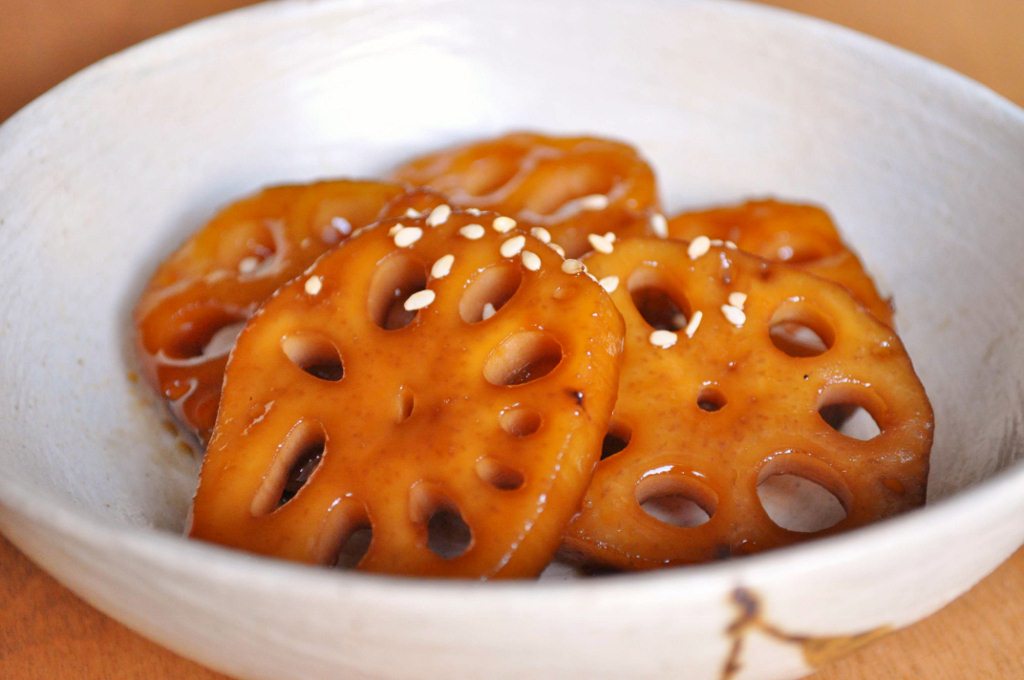
So what do these braised lotus roots (연근조림 Yeongeun/Yeongn/Yeonkeun Jorim) remind me of? It totally brings back fond memories from my high school days, eating lunch boxes with my friends, sharing our banchan (반찬 – side dish) together. And this was certainly one of my top favorites to have in the lunch box. It is also a commonly served side dish at many Korean restaurants. But most often than not, the lotus roots jorim at restaurants are either too salty, not sweet enough or too sweet and the texture is usually very gummy. They taste best when they are slightly crunchy, salty and sweet, all at the same time.
Lotus roots are also well known for its health benefits. First of all, it’s very low calorie (3.5 oz is only 70 calories). It is a great source of fiber and vitamin C. It also has good amounts of vitamin B complex and even minerals like copper, zinc, magnesium and manganese.
This recipe was requested by my niece MJ – to whom I owe many thanks for all her wonderful feedback on my blog throughout this year.
Servings: 8 Cooking Time: 30 min Difficulty: Easy
Ingredients
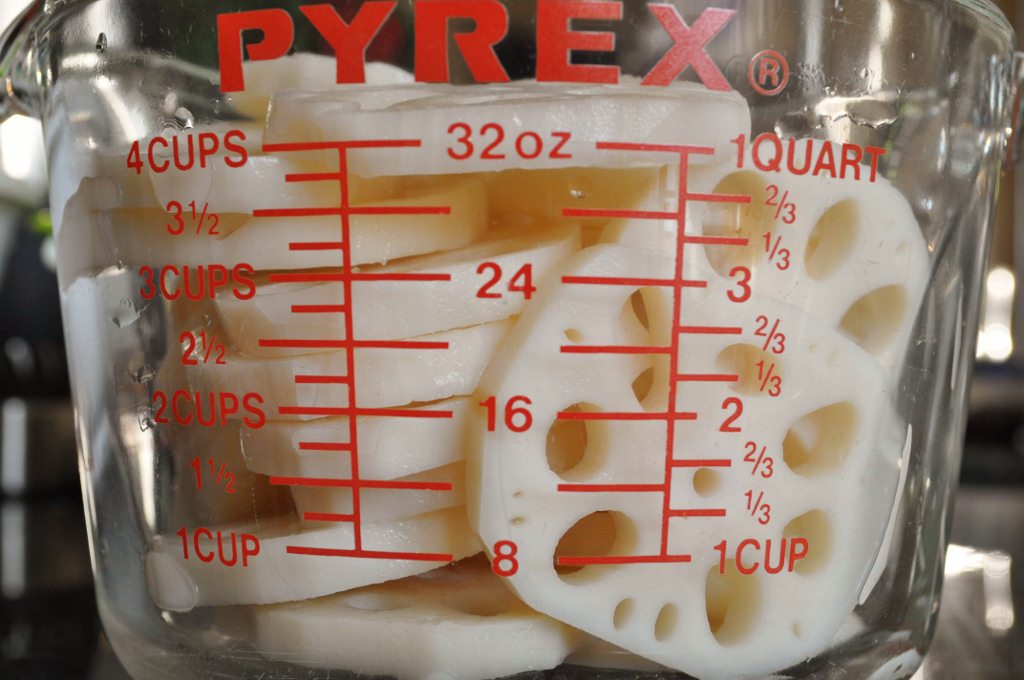
- one 16 oz pkg
- blanched lotus roots (about 4 C)
- 1 T + 1tsp vegetable oil
- 4 T + 2tsp soy sauce
- 3 T sugar
- 1 T + 1tsp cooking rice wine (sake is good)
- 1 T rice malt syrup
- 2 T maple syrup
- 3/4 C + 1 tsp water
- pinch of sesame seeds as garnish
Directions
1. I could not find any fresh lotus roots at my store so I bought this packaged lotus root that comes already blanched. If you can buy fresh lotus roots, that’s probably better but I think this is just as good. For fresh lotus roots, just wash, peel, slice them into 1/4 inch thickness and then blanch them in boiling vinegar water (1 T vinegar to 4-5 C water).
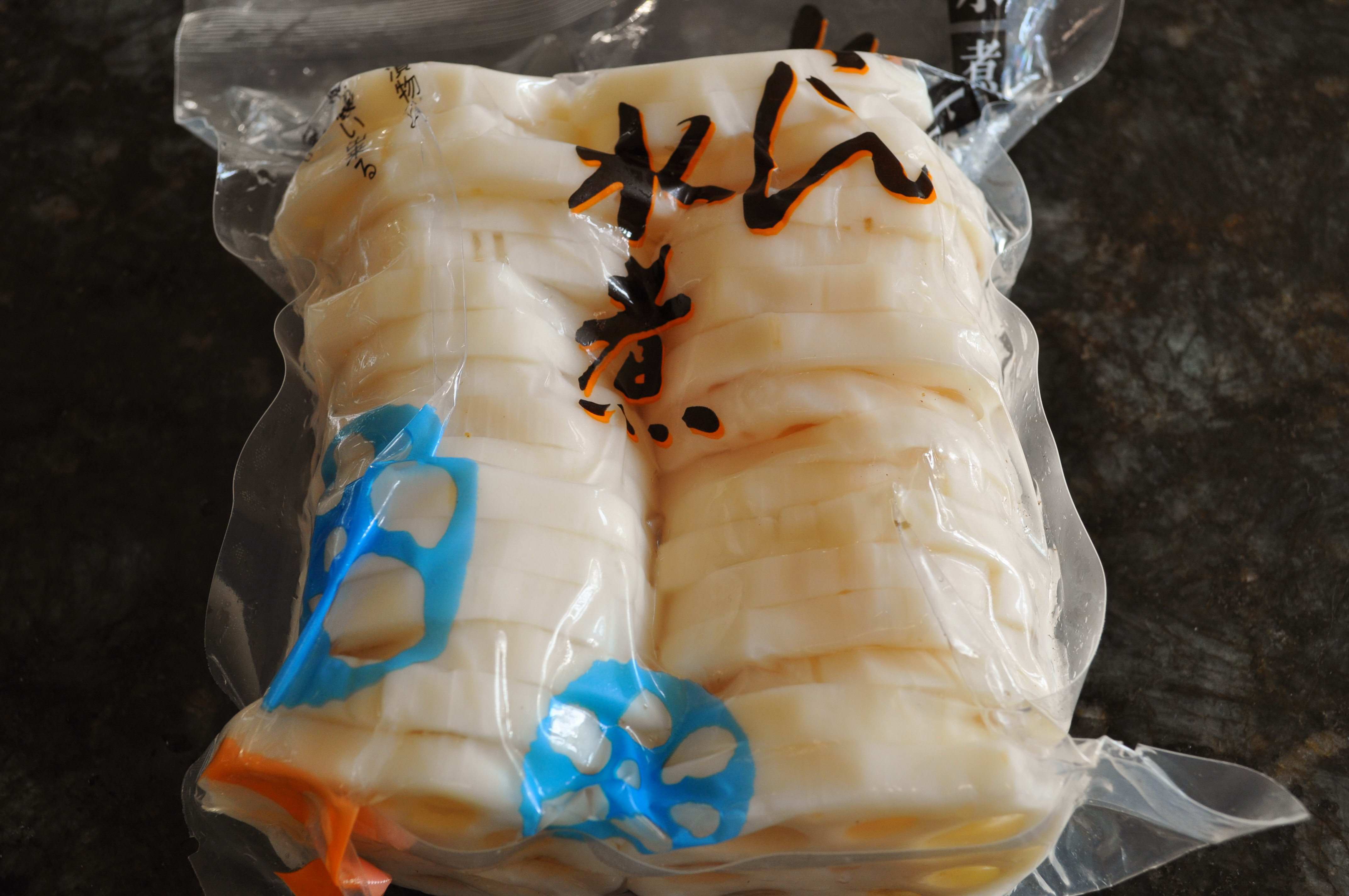
The packaged lotus roots already come in vinegar water so make sure you drain it, rinse it a couple times and then dry off any excess water by placing them on sheets of paper towel.
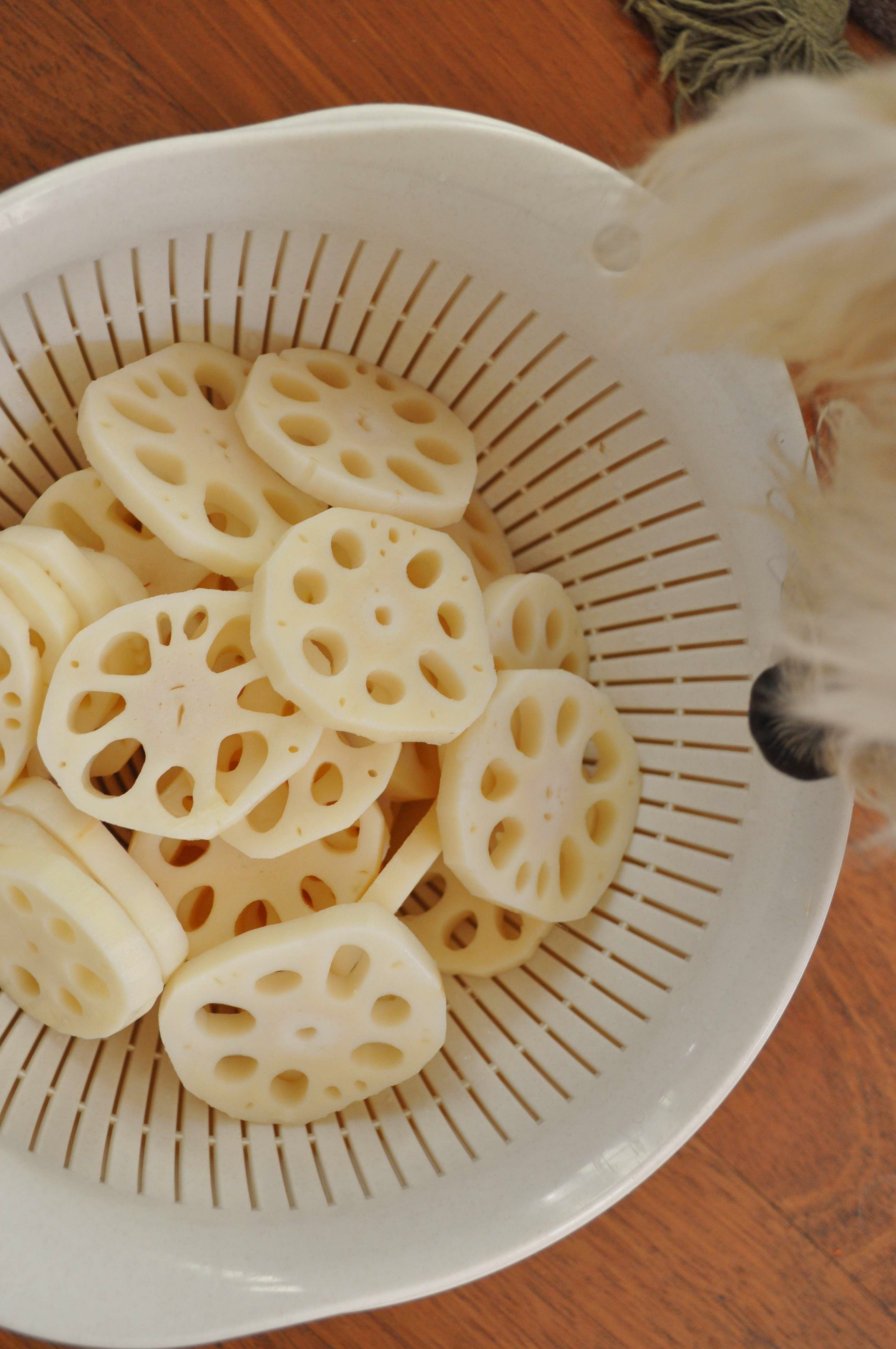
2. On medium high heat, add the 1 T+ 1tsp of oil in a pot and lightly saute the lotus roots for 5 min.
3. Make the sauce by mixing the soy sauce, sugar, cooking wine, water and malt syrup. Add the sauce to the pot and bring to a boil on medium high heat.
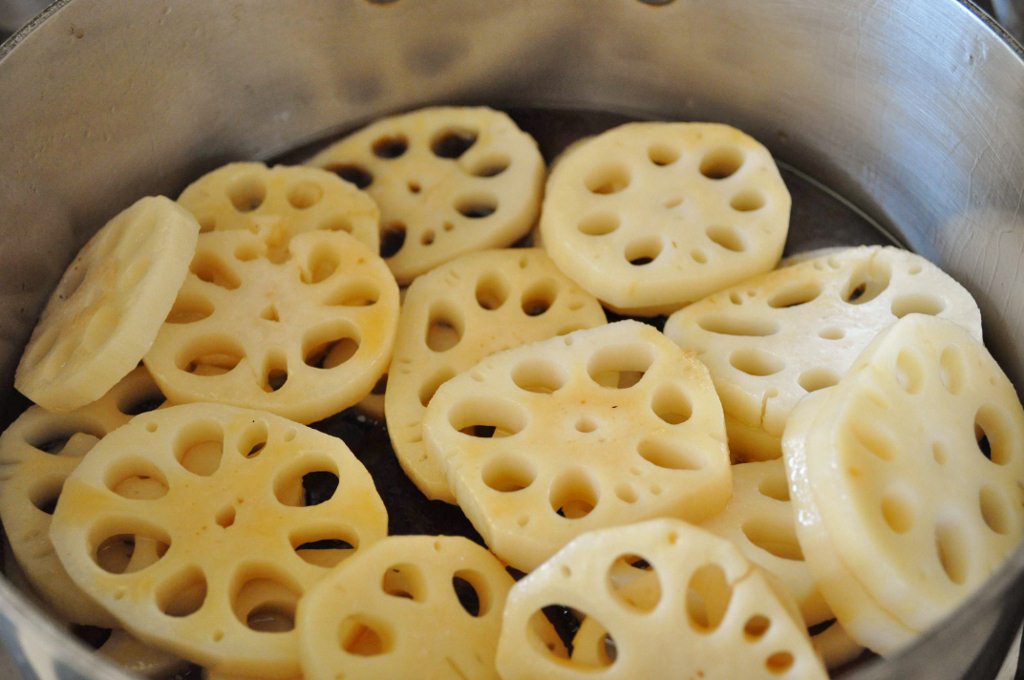
4. Once it starts to boil, reduce the heat, cover with a lid and let it simmer for 20 minutes. Stir the lotus root slices every few minutes to make sure they get evenly coated with the sauce. It should look something like this..
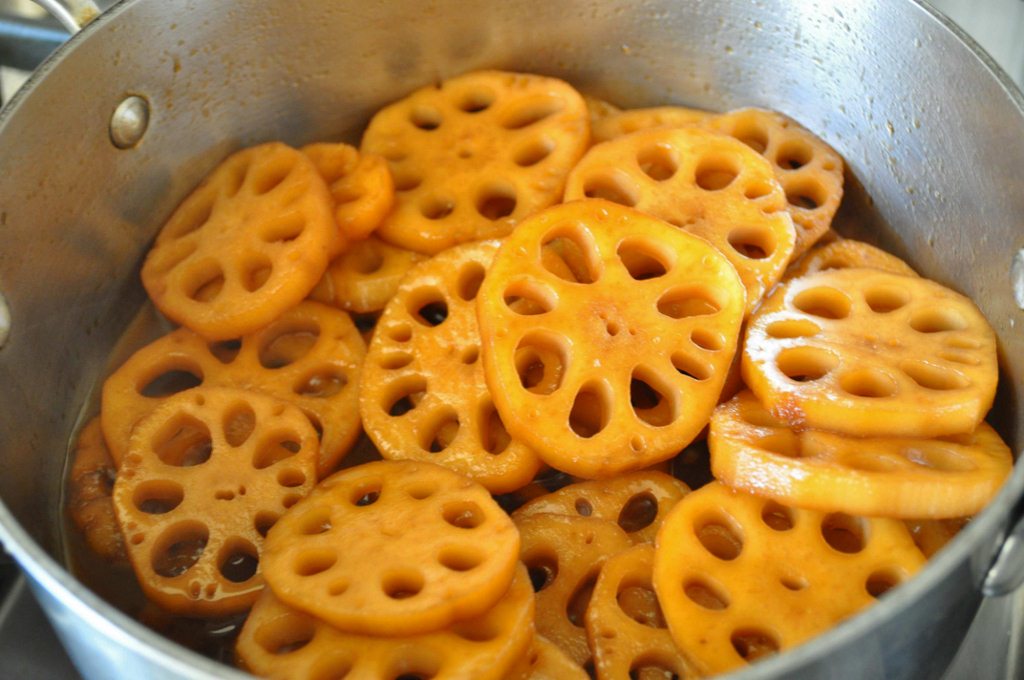
5. For the final step, take off the lid and add 2 T maple syrup. Let the sauce reduce further (so that it barely covers the bottom of the pot) in low heat for 5-7 minutes. This will add a nice glaze to the jorim. Stir the lotus roots often to glaze them evenly.
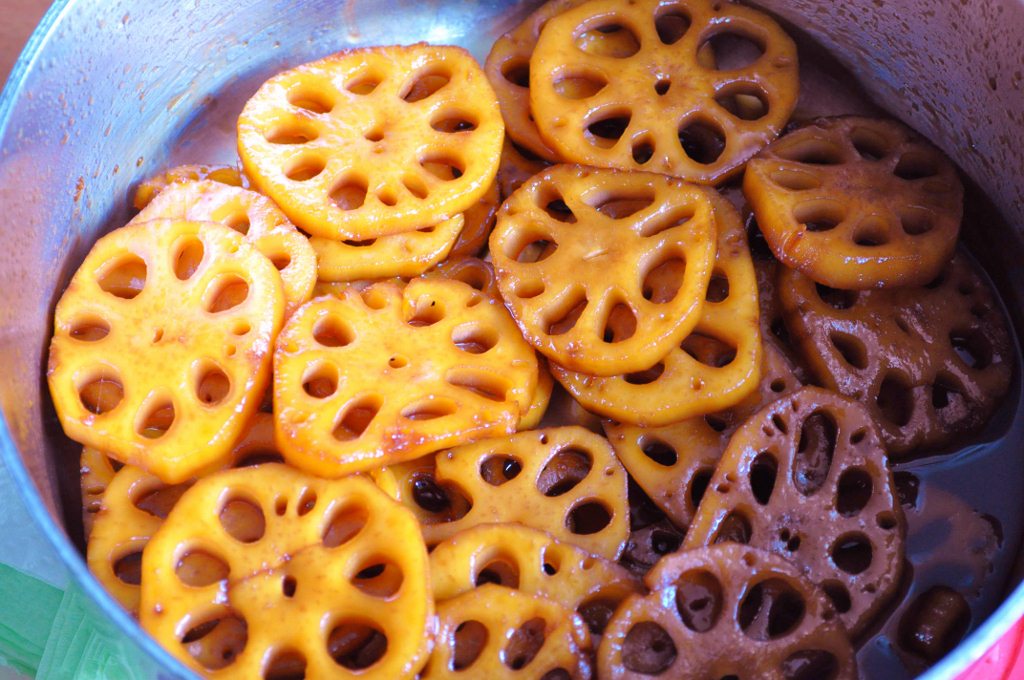
And there it is! Sprinkle some roasted sesame seeds on top. These lotus roots will be just sweet and salty enough to make a great side dish to any Korean meal. If the lotus roots comes out chewy or gummy, you probably cooked it too long.
Sweet and Salty Lotus Roots (Yeonkeun Jorim)
Ingredients
- 16 oz blanched lotus roots (about 4 cups / 1 L)
- 4 tsp vegetable oil
- 4.6 Tbsp soy sauce
- 3 Tbsp sugar
- 4 tsp cooking rice wine (sake is good)
- 1 Tbsp rice malt syrup
- 2 Tbsp maple syrup
- 3/4 cup + 1 tsp water
- Pinch of sesame seeds as garnish
Instructions
- For fresh lotus roots, just wash, peel, slice them into 1/4 inch thickness and then blanch them in boiling vinegar water (1 Tbs vinegar to 4-5 cups water).
- On medium high heat, add the 1 Tbs + 1tsp of oil in a pot and lightly saute the lotus roots for 5 min.
- Make the sauce by mixing the soy sauce, sugar, cooking wine, water and malt syrup. Add the sauce to the pot and bring to a boil on medium high heat.
- Once it starts to boil, reduce the heat, cover with a lid and let it simmer for 20 minutes. Stir the lotus root slices every few minutes to make sure they get evenly coated with the sauce.
- For the final step, take off the lid and add 2 Tbs maple syrup. Let the sauce reduce further (so that it barely covers the bottom of the pot) in low heat for 5-7 minutes. This will add a nice glaze to the jorim. Stir the lotus roots often to glaze them evenly.
- Sprinkle some roasted sesame seeds on top. These lotus roots will be just sweet and salty enough to make a great side dish to any Korean meal.
- You can keep yeonkeun jorim in the fridge for several days up to a week. Reheating is not necessary. They taste great at room temperature.
Tips & Notes:
- I could not find any fresh lotus roots at my store so I bought packaged lotus root that comes already blanched. If you can buy fresh lotus roots, that’s probably better but I think this is just as good. The packaged lotus roots already come in vinegar water so make sure you drain it, rinse it a couple times and then dry off any excess water by placing them on sheets of paper towel.
Nutrition Information:
Storage
You can keep yeonkeun jorim in the fridge for several days up to a week. Reheating is not necessary. They taste great at room temperature.
Lunchboxes
Having made this dish, I was inspired to make a lunchbox from the yeonkeun jorim and other leftover banchan I had in the fridge. On the right half – I found some leftover egg garnishes from a dduk gook we had couple days ago, some sauteed aster caber (취나물 chwinamul) and dried radish (무우말랭이 moo malengi). Because this lunchbox has only one partition, I created my own partitions by molding some tin foil into little square boxes. This is how moms used to separate banchan in their children’s lunchboxes in Korea. Otherwise, it can become one big bibimbab by the time you get to school! On the left half – I put some rice with wild grains and some leftover chicken cutlet w/ tonaktsu sauce on top. All of these can be eaten at room temperature so no need to heat anything. The combination of the savory, salty, sweet and a touch of spiciness really made this lunchbox simply divine!
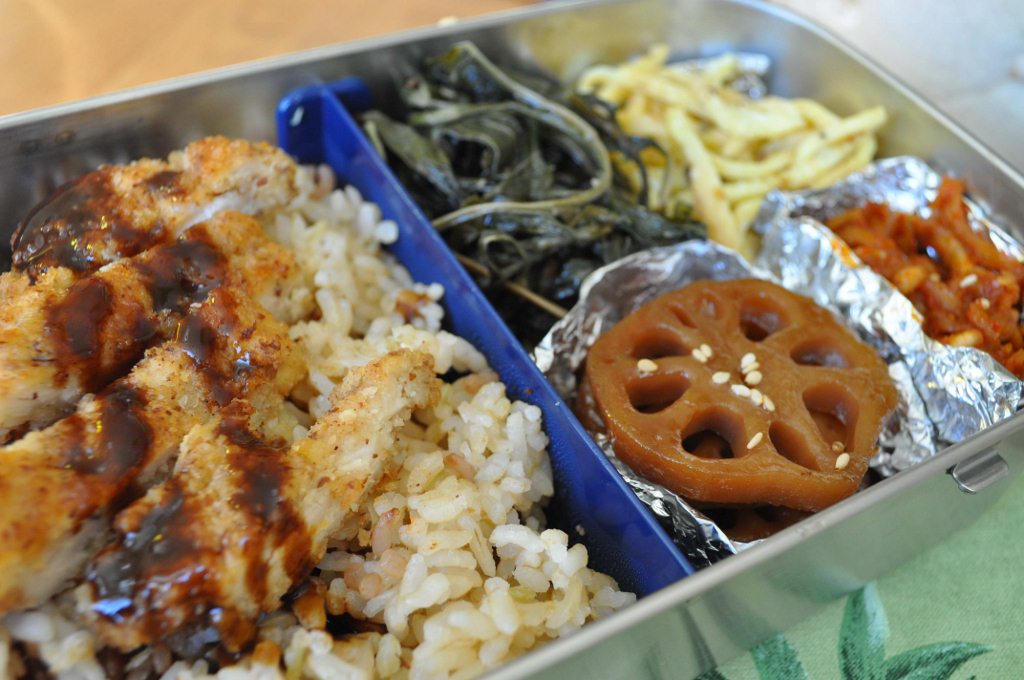

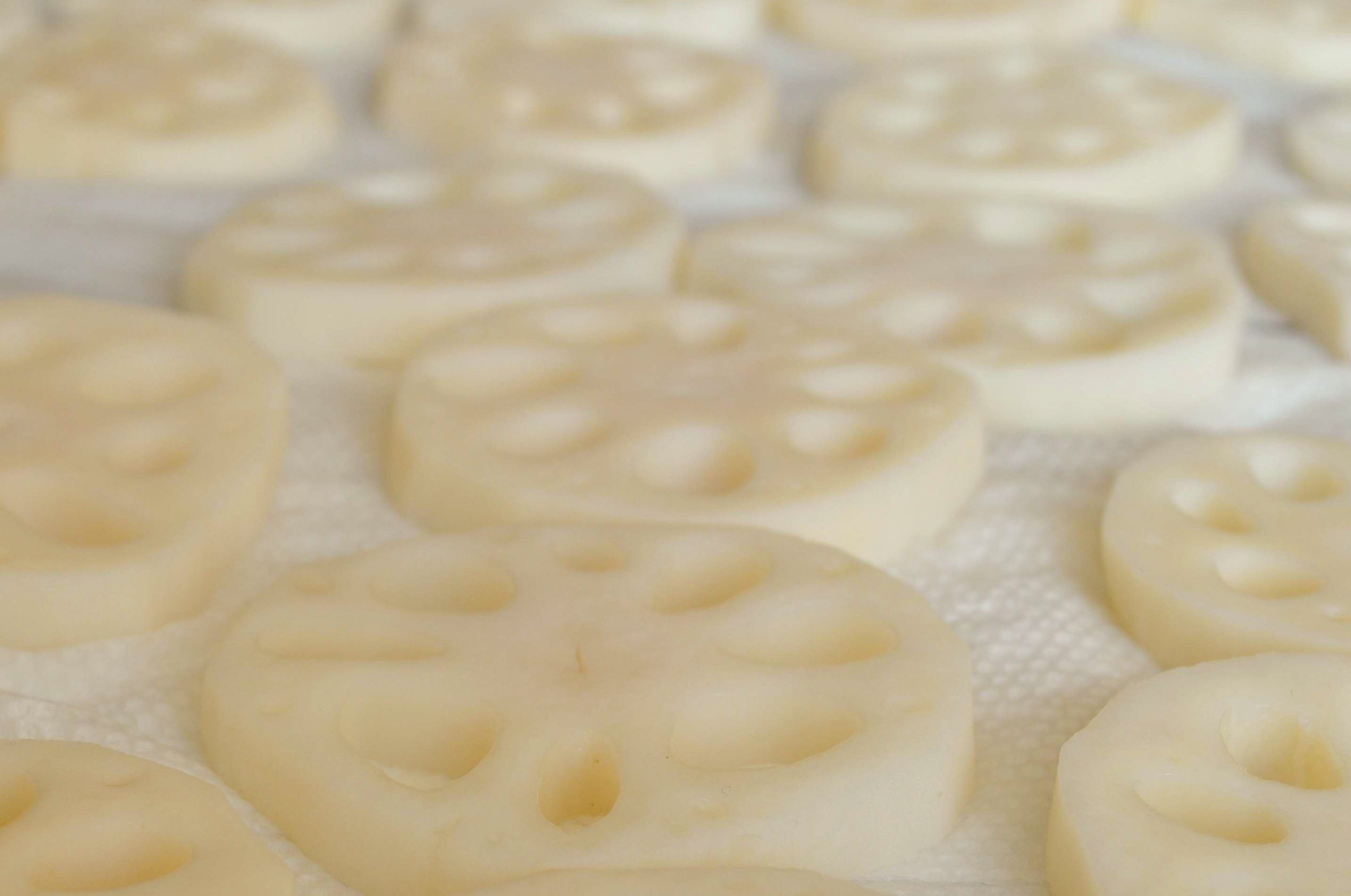
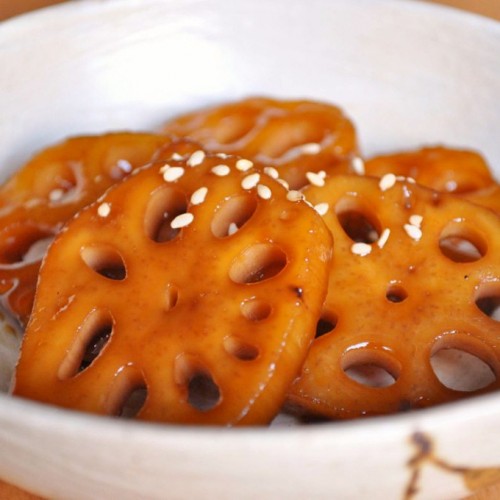
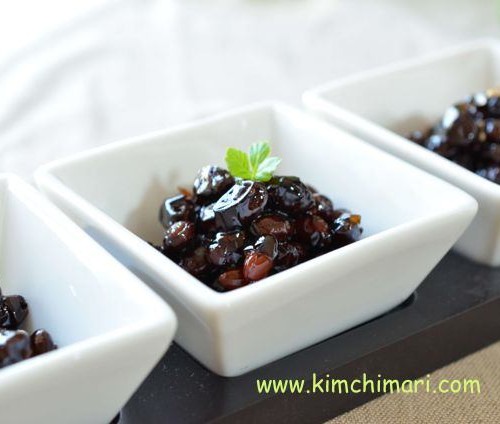
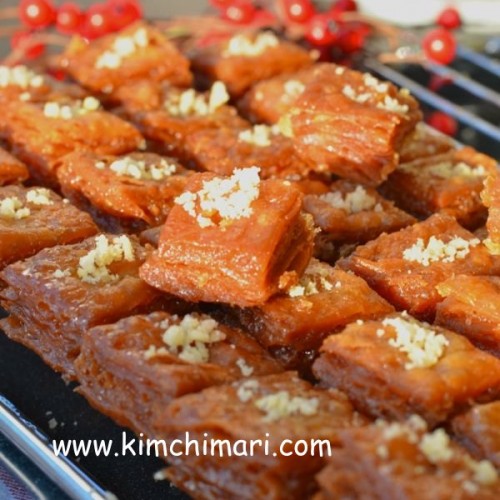

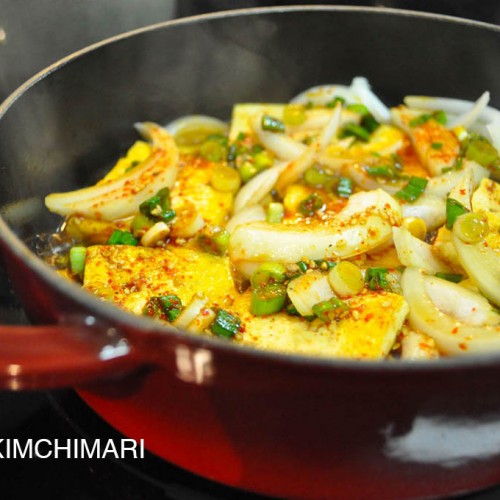
















Hi! How come we add 3/4 of water to the sauce? Mine turned out very soupy. I looked at some other recipes online and they do not add any water
It should have reduced quite a bit – sorry it didn’t turn out as you wanted. You can try to reduce it further even now. Thank you.
I’ve noticed that most jorim recipes add water. The results are usually too soupy for me. Maybe I don’t have the heat up high enough. If the vegetables are tender and cooked, the soupy sauce is great over rice. Otherwise, I sometimes reduce or eliminate the water.
This recipe certainly should not end up soupy – yes, perhaps the heat was not high enough. Good that you reduced it. Enjoy!